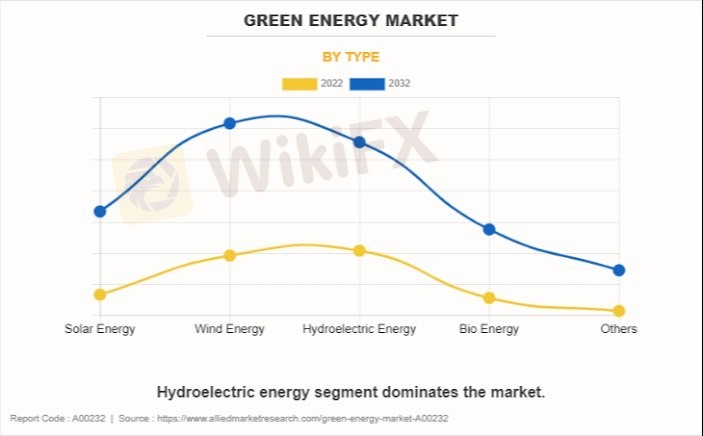
2024-12-25 20:01
업계에서RENEWABLE ENERGY INVESTMENT
#Where are the post-holiday rally opportunities?Michriches#
Investing in renewable energy during Q1 can be a strategic move, especially as green initiatives continue to gain momentum globally. Governments, businesses, and consumers are increasingly prioritizing sustainability, which is driving demand for clean energy solutions. Here’s a guide to capitalizing on renewable energy investments as we enter the first quarter of the year:
1. Track Government Initiatives and Policy Support
• Government Spending: Look for countries or regions increasing investments in green energy infrastructure, such as the U.S. Inflation Reduction Act (IRA), the EU’s Green Deal, and China’s expansion of solar and wind capacity. These policies often translate into long-term support for renewable energy.
• Incentives for Clean Energy: Keep an eye on new tax incentives, grants, or subsidies for renewable energy projects and technologies, such as wind, solar, electric vehicles (EVs), and energy storage.
• Climate Goals: Governments setting aggressive emissions targets or net-zero pledges provide a fertile environment for renewable energy growth. For example, carbon-neutral commitments by large economies can drive significant investment in clean energy solutions.
2. Focus on High-Impact Renewable Sectors
The renewable energy space is diverse, and specific sub-sectors offer unique growth opportunities. Consider the following:
• Solar Energy: The cost of solar technology has dropped significantly, making it a prime candidate for investment. Solar power companies like First Solar (FSLR) and Enphase Energy (ENPH) have strong growth prospects due to increasing global solar adoption.
• Wind Energy: Wind power, both onshore and offshore, is growing rapidly. Companies such as Vestas Wind Systems (VWS), Siemens Gamesa, and Ørsted (ORSTED) focus on wind turbine manufacturing and installation, benefiting from expanding global wind energy capacity.
• Energy Storage and Battery Technology: Energy storage systems, including lithium-ion batteries, are critical for addressing intermittent power generation from wind and solar. Companies like Tesla (TSLA), Albemarle (ALB), and Panasonic (PCRFY) are leading in battery manufacturing.
• Hydrogen: Green hydrogen is gaining traction as a clean fuel for industries like transportation and heavy industry. Companies involved in hydrogen production, such as Plug Power (PLUG) and Ballard Power Systems (BLDP), are well-positioned for long-term growth.
• Electric Vehicles (EVs): The electric vehicle market is a significant beneficiary of the renewable energy transition. Companies like Tesla, Rivian (RIVN), and Lucid Motors (LCID) are poised to grow as global EV adoption rises, which complements broader renewable energy goals.
3. Examine Clean Energy ETFs and Funds
For those seeking diversified exposure to renewable energy without picking individual stocks, exchange-traded funds (ETFs) and mutual funds focused on clean energy are excellent options. Some popular renewable energy ETFs include:
• iShares Global Clean Energy ETF (ICLN): This fund tracks global clean energy companies, with exposure to solar, wind, and energy storage sectors.
• Invesco Solar ETF (TAN): Focuses specifically on solar companies, making it a good choice for those looking to capitalize on solar energy’s rapid growth.
• SPYG (SPDR S&P 500 Growth ETF): While not exclusive to renewable energy, this ETF includes high-growth companies, many of which are focused on green energy initiatives.
• ARK Clean Energy ETF (ARKW): Managed by ARK Invest, this ETF includes disruptive renewable technologies, including electric vehicles, energy storage, and solar power.
4. Evaluate Companies with Strong ESG (Environmental, Social, Governance) Focus
Companies that integrate strong ESG principles into their operations are likely to benefit from both investor preference and regulatory trends that favor sustainability. Look for:
• Sustainable Business Models: Companies like NextEra Energy (NEE), Brookfield Renewable Partners (BEP), and Renewable Energy Group (REGI) prioritize renewable energy and sustainability in their business models.
• Carbon Neutrality: Firms that are committed to becoming carbon neutral in the near future are likely to see an increase in investment. Many investors are increasingly looking to avoid companies with poor environmental practices, making ESG-driven companies attractive.
5. Monitor Energy Transition Stocks
As the energy transition progresses, some companies that traditionally focused on fossil fuels are pivoting toward greener energy sources. These “energy transition” stocks may offer a blend of stability and future growth potential:
• ExxonMobil (XOM) and Chevron (CVX) have been investing in renewables and green technology solutions, including carbon capture and hydrogen production.
좋아요 0
OLUWAPELUMI
ブローカー
인기있는 콘텐츠
시장 분석
투자주체별매매 동향
시장 분석
유로존 경제 쇠퇴 위기 직면
시장 분석
국제 유가는 어디로
시장 분석
미국증시 레버리지(Leverage)·인버스(Inverse)형의 ETF, 최근 사상 최대 신
시장 분석
투기장 된 원유 ETL...첫 투자위험 발령
시장 분석
RBNZ 양적완화 확대
포럼 카테고리

플랫폼

전시회

대리상

신병 모집

EA

업계에서

시장

인덱스
RENEWABLE ENERGY INVESTMENT
 나이지리아 | 2024-12-25 20:01
나이지리아 | 2024-12-25 20:01#Where are the post-holiday rally opportunities?Michriches#
Investing in renewable energy during Q1 can be a strategic move, especially as green initiatives continue to gain momentum globally. Governments, businesses, and consumers are increasingly prioritizing sustainability, which is driving demand for clean energy solutions. Here’s a guide to capitalizing on renewable energy investments as we enter the first quarter of the year:
1. Track Government Initiatives and Policy Support
• Government Spending: Look for countries or regions increasing investments in green energy infrastructure, such as the U.S. Inflation Reduction Act (IRA), the EU’s Green Deal, and China’s expansion of solar and wind capacity. These policies often translate into long-term support for renewable energy.
• Incentives for Clean Energy: Keep an eye on new tax incentives, grants, or subsidies for renewable energy projects and technologies, such as wind, solar, electric vehicles (EVs), and energy storage.
• Climate Goals: Governments setting aggressive emissions targets or net-zero pledges provide a fertile environment for renewable energy growth. For example, carbon-neutral commitments by large economies can drive significant investment in clean energy solutions.
2. Focus on High-Impact Renewable Sectors
The renewable energy space is diverse, and specific sub-sectors offer unique growth opportunities. Consider the following:
• Solar Energy: The cost of solar technology has dropped significantly, making it a prime candidate for investment. Solar power companies like First Solar (FSLR) and Enphase Energy (ENPH) have strong growth prospects due to increasing global solar adoption.
• Wind Energy: Wind power, both onshore and offshore, is growing rapidly. Companies such as Vestas Wind Systems (VWS), Siemens Gamesa, and Ørsted (ORSTED) focus on wind turbine manufacturing and installation, benefiting from expanding global wind energy capacity.
• Energy Storage and Battery Technology: Energy storage systems, including lithium-ion batteries, are critical for addressing intermittent power generation from wind and solar. Companies like Tesla (TSLA), Albemarle (ALB), and Panasonic (PCRFY) are leading in battery manufacturing.
• Hydrogen: Green hydrogen is gaining traction as a clean fuel for industries like transportation and heavy industry. Companies involved in hydrogen production, such as Plug Power (PLUG) and Ballard Power Systems (BLDP), are well-positioned for long-term growth.
• Electric Vehicles (EVs): The electric vehicle market is a significant beneficiary of the renewable energy transition. Companies like Tesla, Rivian (RIVN), and Lucid Motors (LCID) are poised to grow as global EV adoption rises, which complements broader renewable energy goals.
3. Examine Clean Energy ETFs and Funds
For those seeking diversified exposure to renewable energy without picking individual stocks, exchange-traded funds (ETFs) and mutual funds focused on clean energy are excellent options. Some popular renewable energy ETFs include:
• iShares Global Clean Energy ETF (ICLN): This fund tracks global clean energy companies, with exposure to solar, wind, and energy storage sectors.
• Invesco Solar ETF (TAN): Focuses specifically on solar companies, making it a good choice for those looking to capitalize on solar energy’s rapid growth.
• SPYG (SPDR S&P 500 Growth ETF): While not exclusive to renewable energy, this ETF includes high-growth companies, many of which are focused on green energy initiatives.
• ARK Clean Energy ETF (ARKW): Managed by ARK Invest, this ETF includes disruptive renewable technologies, including electric vehicles, energy storage, and solar power.
4. Evaluate Companies with Strong ESG (Environmental, Social, Governance) Focus
Companies that integrate strong ESG principles into their operations are likely to benefit from both investor preference and regulatory trends that favor sustainability. Look for:
• Sustainable Business Models: Companies like NextEra Energy (NEE), Brookfield Renewable Partners (BEP), and Renewable Energy Group (REGI) prioritize renewable energy and sustainability in their business models.
• Carbon Neutrality: Firms that are committed to becoming carbon neutral in the near future are likely to see an increase in investment. Many investors are increasingly looking to avoid companies with poor environmental practices, making ESG-driven companies attractive.
5. Monitor Energy Transition Stocks
As the energy transition progresses, some companies that traditionally focused on fossil fuels are pivoting toward greener energy sources. These “energy transition” stocks may offer a blend of stability and future growth potential:
• ExxonMobil (XOM) and Chevron (CVX) have been investing in renewables and green technology solutions, including carbon capture and hydrogen production.
좋아요 0
나 도 댓 글 달 래.
제출
0코멘트

댓글이 아직 없습니다. 첫 번째를 만드십시오.

제출
댓글이 아직 없습니다. 첫 번째를 만드십시오.